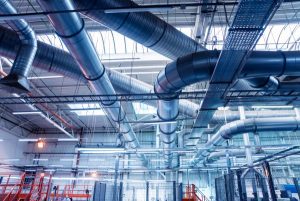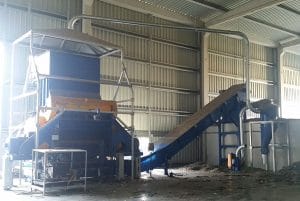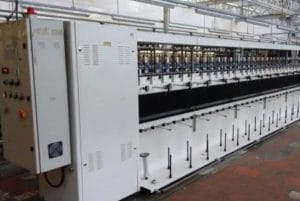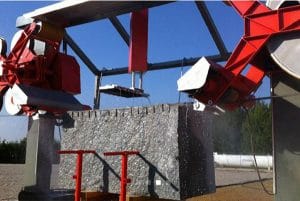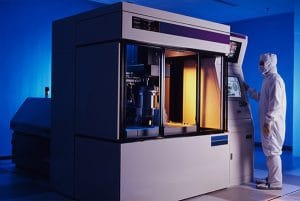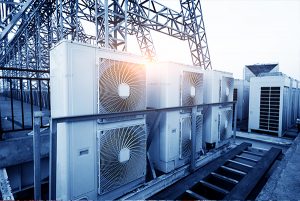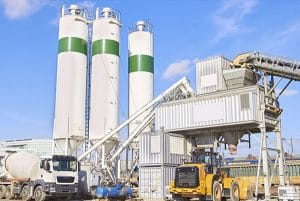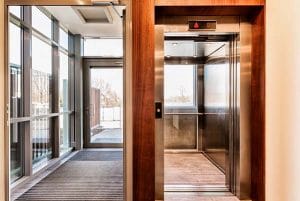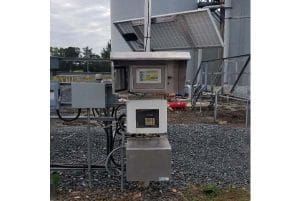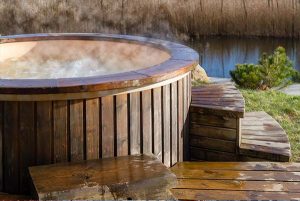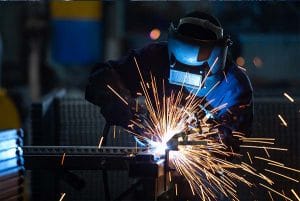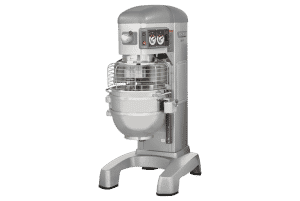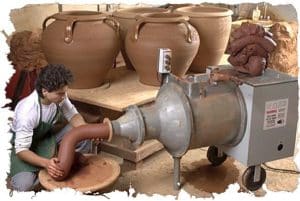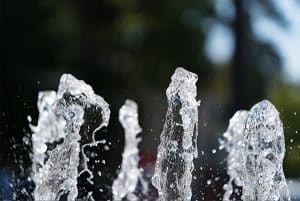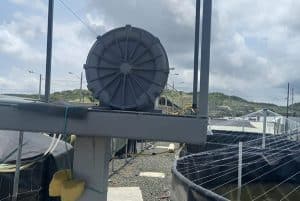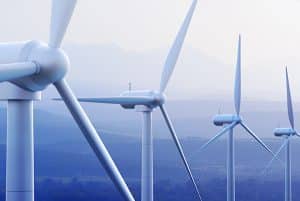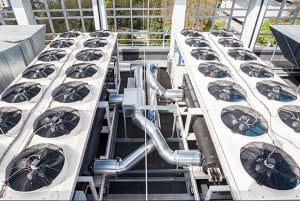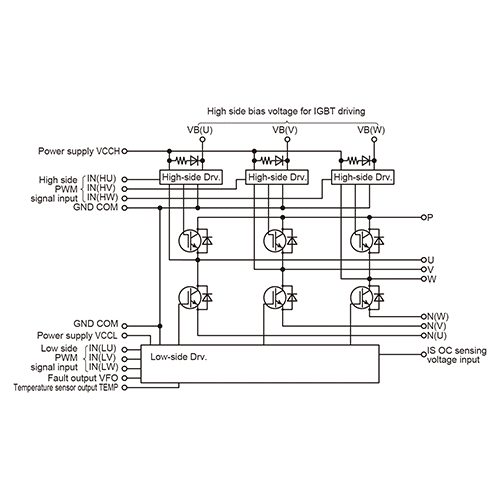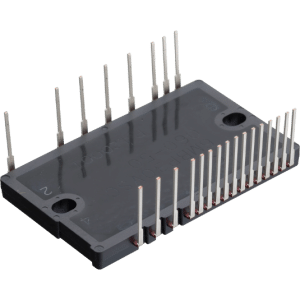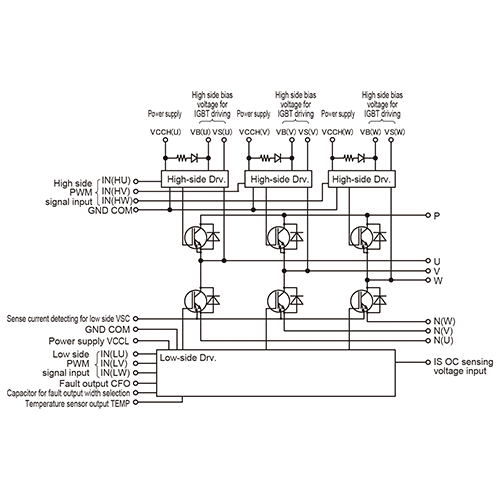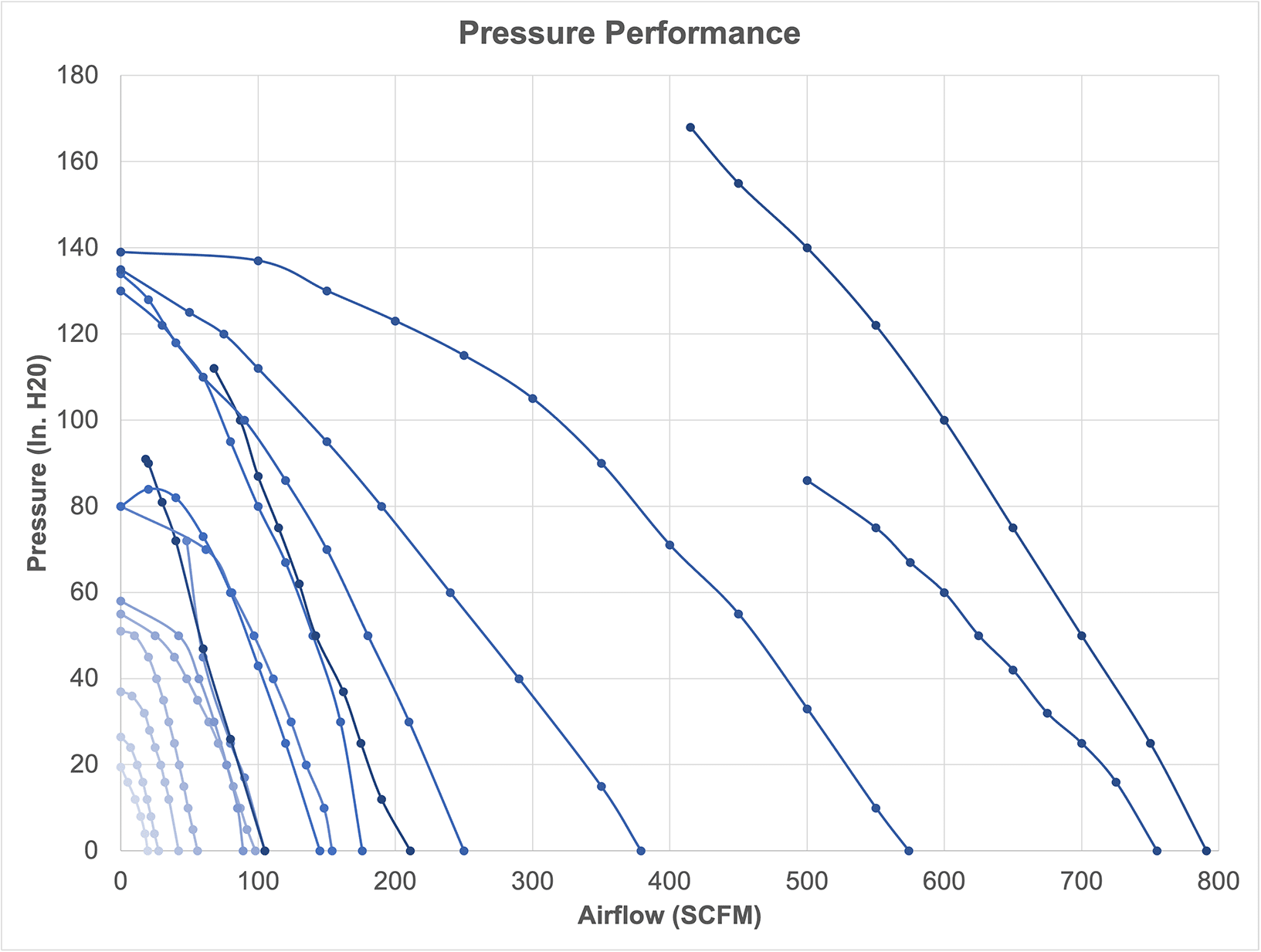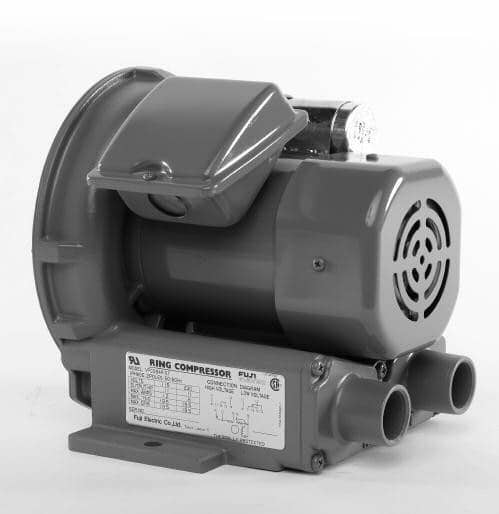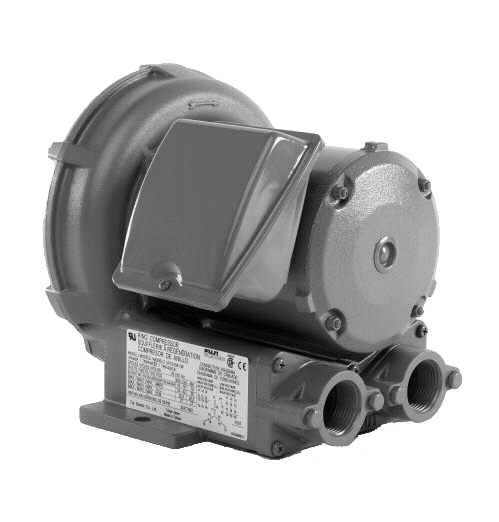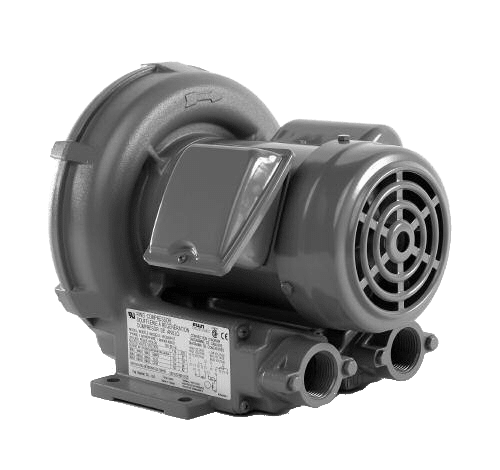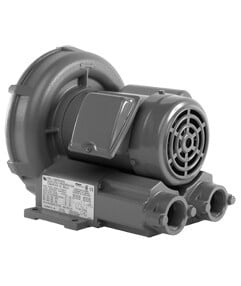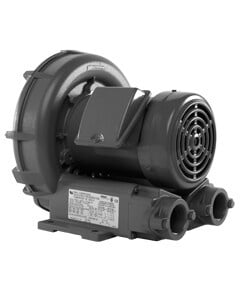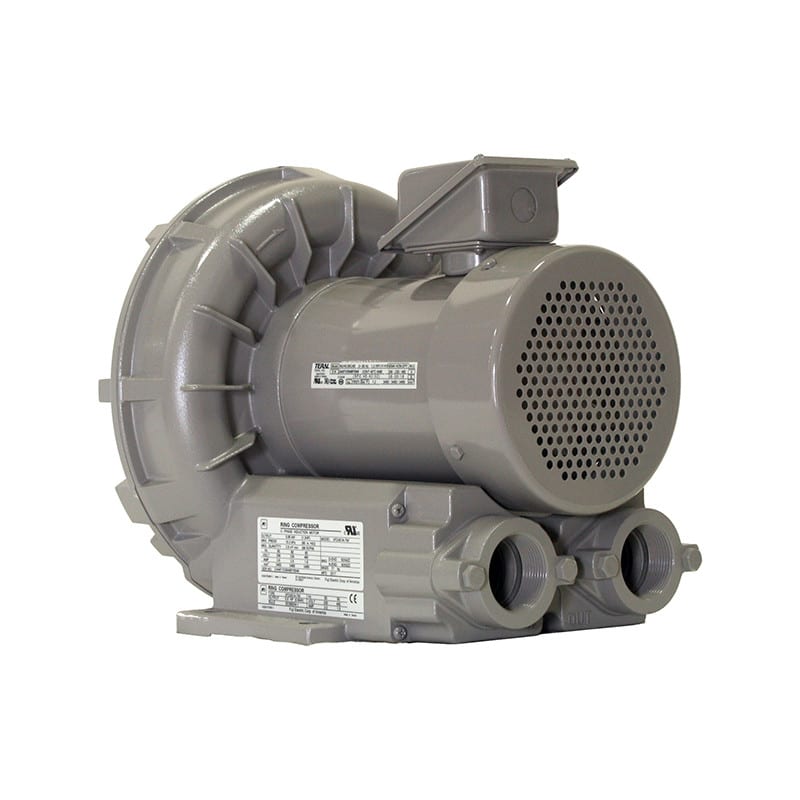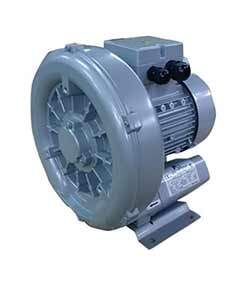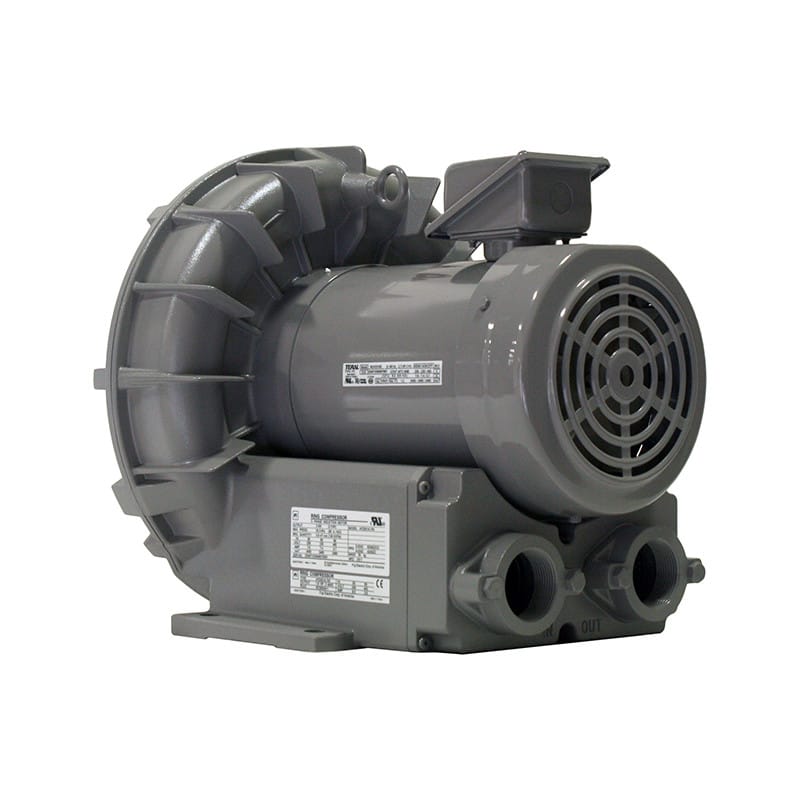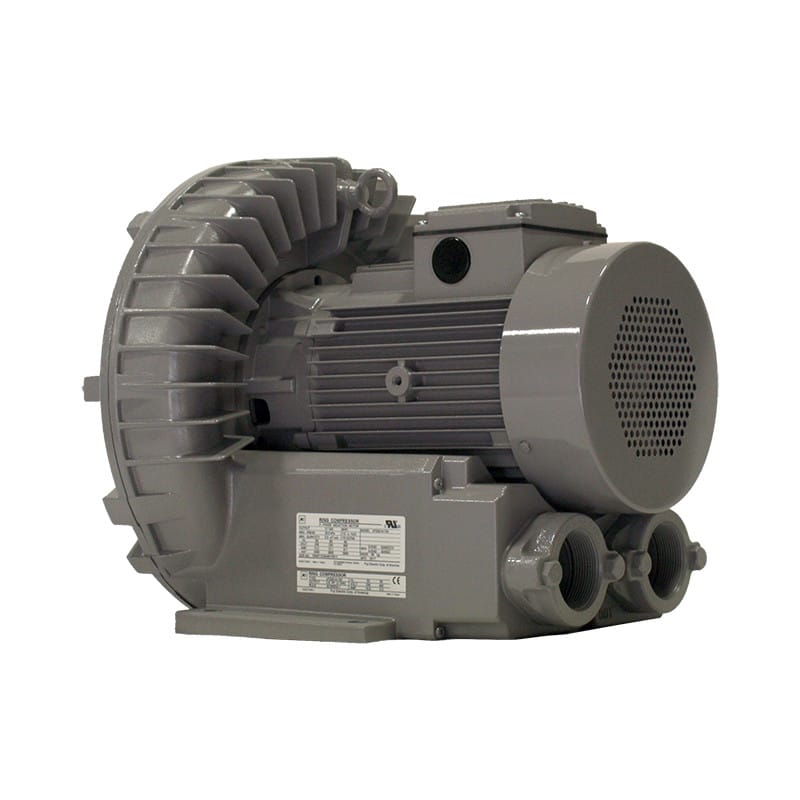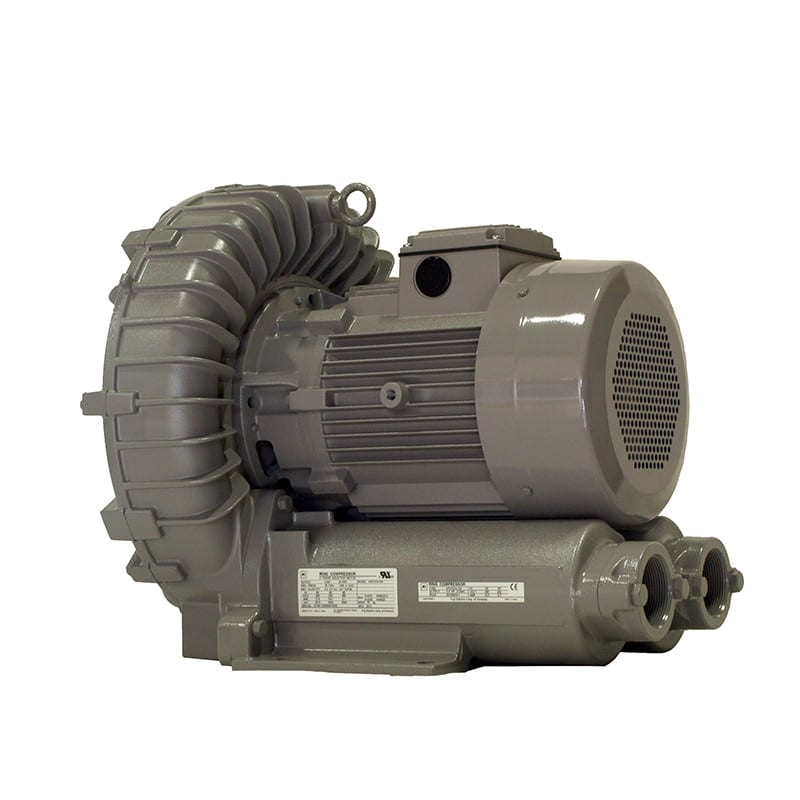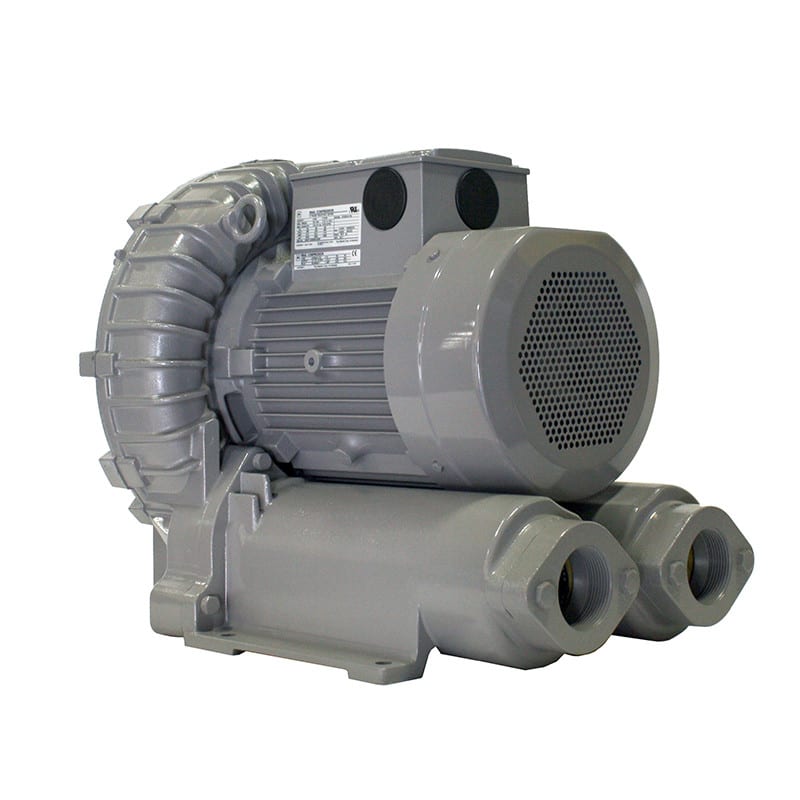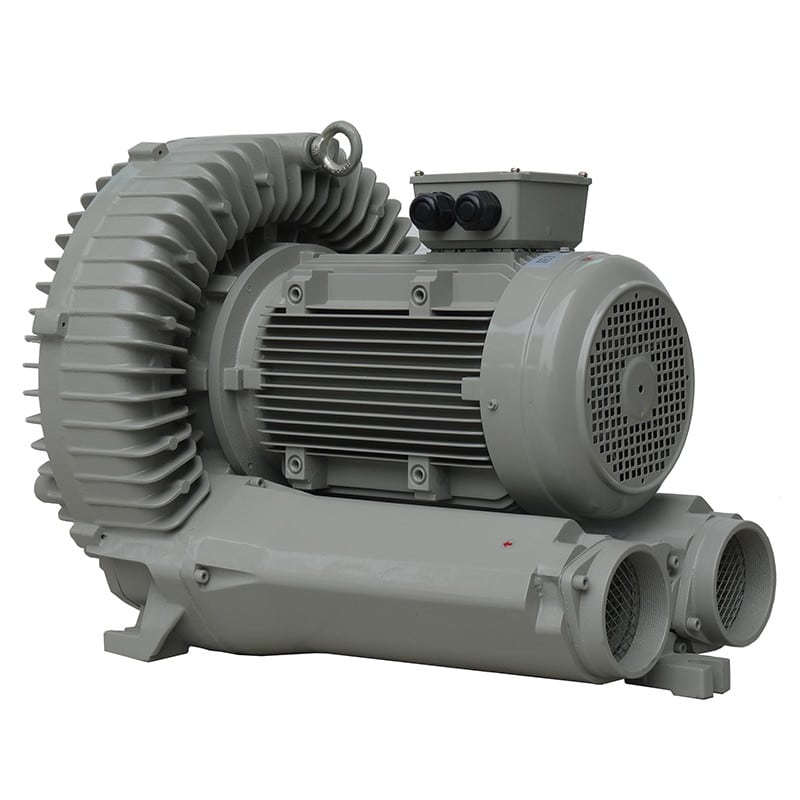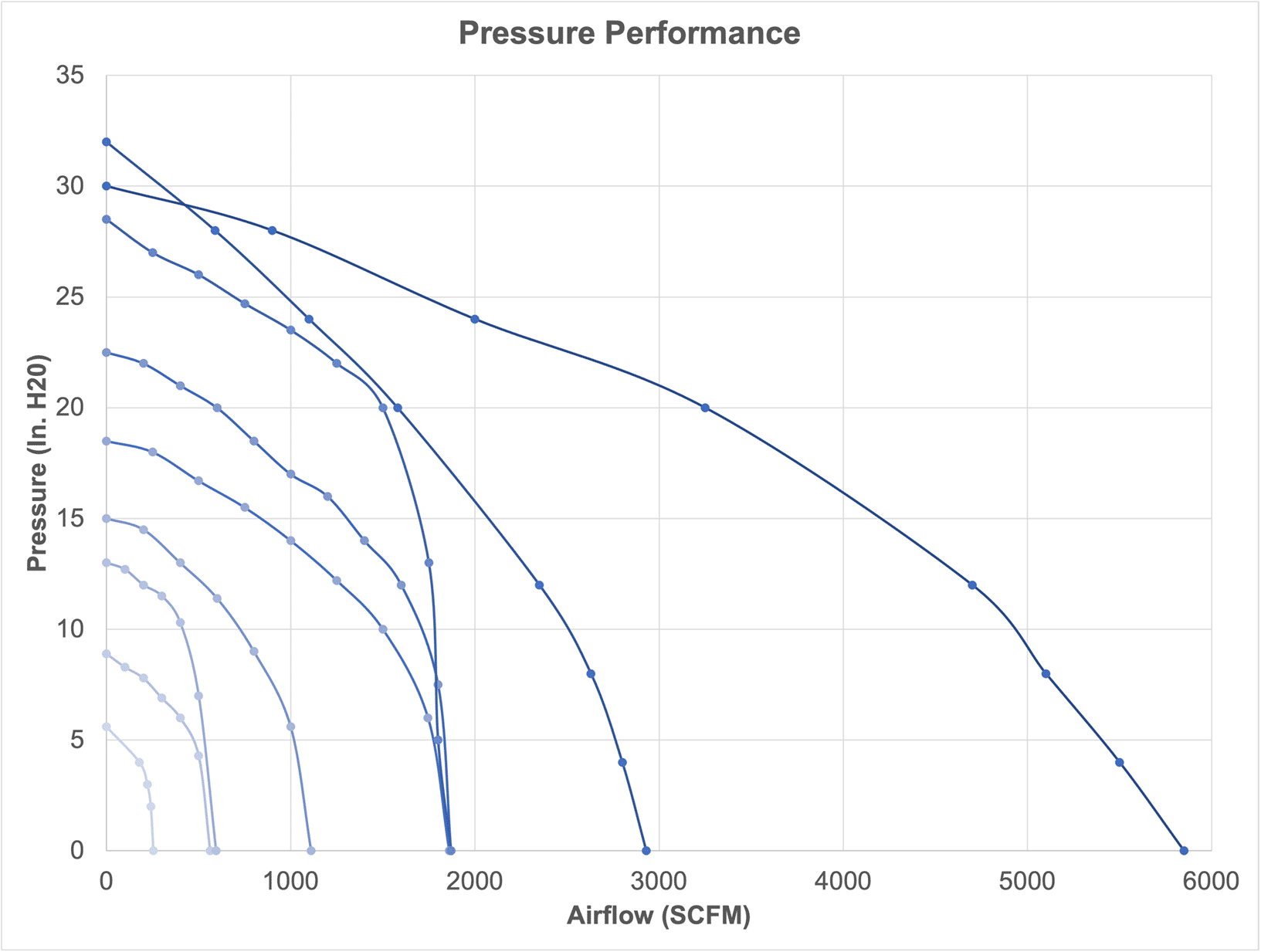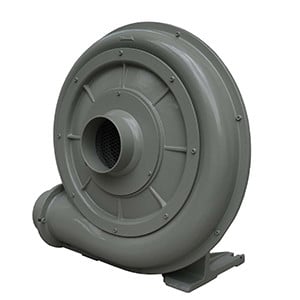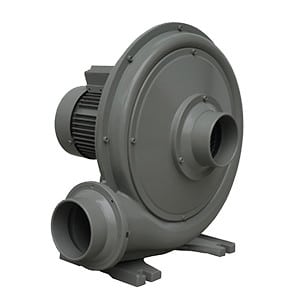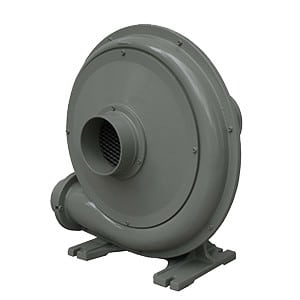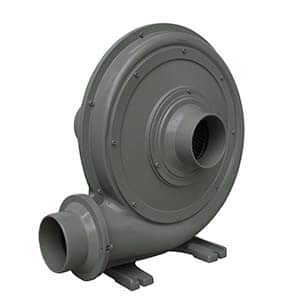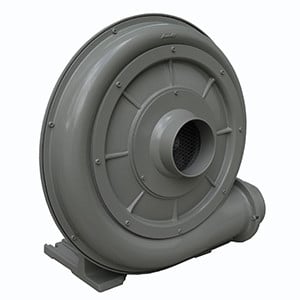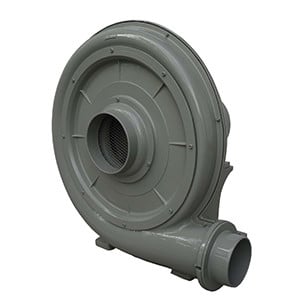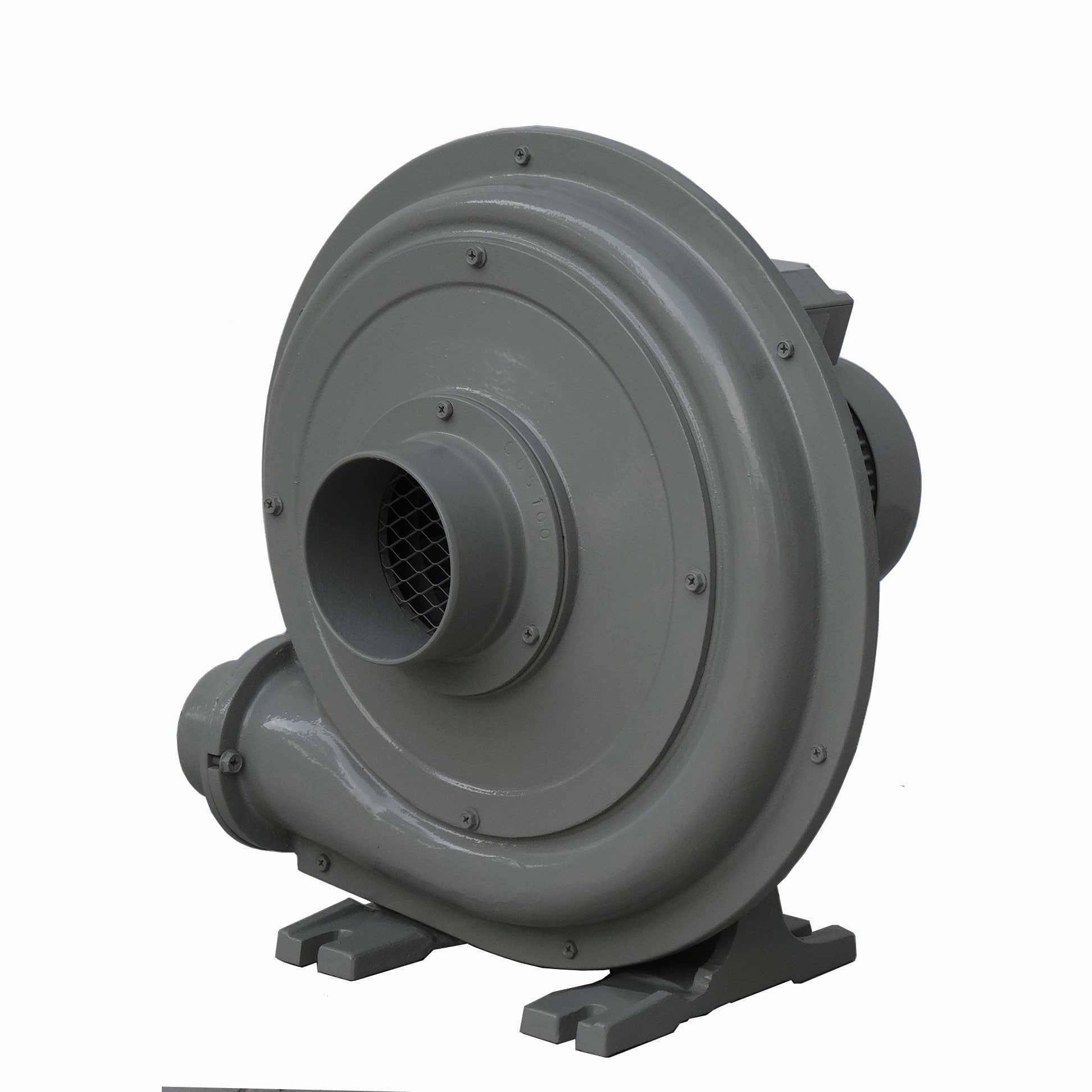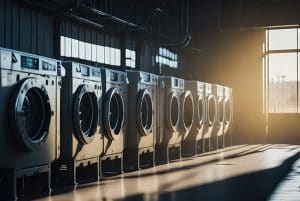Here’s a detailed breakdown of the types of blowers and the blades commonly used in them, focusing on their designs, characteristics, and typical applications: 
Types of Blowers
- Centrifugal Blowers
- Description: Moves air radially by centrifugal force, with air entering axially and exiting perpendicularly.
- Key Features:
- High-pressure capabilities.
- Suitable for systems with resistance (e.g., ductwork).
- Applications:
- HVAC, industrial drying, dust collection, and pneumatic conveying.
- Blade Types:
- Forward-curved
- Backward-curved
- Radial
- Positive Displacement Blowers
- Description: Moves air or gas in discrete volumes using mechanical displacement.
- Key Features:
- Constant flow regardless of pressure changes.
- High-pressure capabilities.
- Applications:
- Wastewater aeration, material handling, and high-pressure pneumatic systems.
- Blade Types:
- Lobed rotors
- Screw-type rotors
- Regenerative Blowers (Side Channel Blowers)
- Description: Air recirculates in a channel within the blower, gaining pressure with each pass.
- Key Features:
- Oil-free operation.
- Moderate pressure and high flow rates.
- Applications:
- Aeration, vacuum systems, and small industrial applications.
- Blade Types:
- Impeller blades (designed for smooth airflow).
- Axial Blowers
- Description: Moves air in a straight path, parallel to the axis of rotation.
- Key Features:
- High-volume, low-pressure airflow.
- Compact design.
- Applications:
- Ventilation, cooling, and exhaust systems.
- Blade Types:
- Propeller-style
- Flat or curved blades
- Inline Duct Blowers
- Description: Installed within ducts to assist airflow in ventilation systems.
- Key Features:
- Low-to-moderate pressure.
- Compact and efficient.
- Applications:
- HVAC duct boosting and confined-space ventilation.
- Blade Types:
- Mixed-flow or axial blades
Types of Blower Blades
- Forward-Curved Blades
- Description: Blades curve in the direction of rotation.
- Features:
- High airflow volume but lower efficiency.
- Sensitive to dirt and debris buildup.
- Applications:
- HVAC fans, air circulation in confined spaces.
- Backward-Curved Blades
- Description: Blades curve against the direction of rotation.
- Features:
- High efficiency and low noise.
- Handles higher pressure with lower power consumption.
- Applications:
- Industrial blowers, high-resistance ductwork systems.
- Radial Blades
- Description: Straight blades radiate outward from the hub.
- Features:
- Durable and suitable for handling particulates or debris.
- Low efficiency but robust for harsh environments.
- Applications:
- Material handling, dust collection systems.
- Airfoil Blades
- Description: Shaped like an airplane wing for optimal airflow.
- Features:
- Highly efficient and quiet operation.
- Handles moderate pressure with low energy consumption.
- Applications:
- HVAC systems, clean air environments.
- Propeller Blades
- Description: Resemble a ship or aircraft propeller.
- Features:
- High airflow but low pressure.
- Simplistic and lightweight.
- Applications:
- Exhaust fans, ventilation systems.
- Mixed-Flow Blades
- Description: A combination of axial and centrifugal blade designs.
- Features:
- Balances airflow and pressure characteristics.
- Compact and versatile.
- Applications:
- Inline duct blowers, HVAC systems.
- Lobed Rotors (for Positive Displacement Blowers)
- Description: Two or three intermeshing lobes that rotate to displace air.
- Features:
- Constant, pulse-free airflow.
- High pressure and durability.
- Applications:
- Wastewater treatment, pneumatic conveying.
- Screw-Type Rotors
- Description: Two interlocking helical screws move air in discrete volumes.
- Features:
- Smooth, continuous airflow.
- High efficiency at moderate-to-high pressures.
- Applications:
- Industrial air compressors, gas handling.
Choosing the Right Blower and Blade Type
- Application: Match the blower’s pressure and flow requirements with the system’s needs (e.g., HVAC vs. industrial material handling).
- Efficiency: Opt for backward-curved or airfoil blades for high-efficiency systems.
- Durability: Use radial blades or lobed rotors in harsh environments with particulates.
- Noise: For quiet operation, choose airfoil or backward-curved blades.
This breakdown covers the most common blower and blade types, helping you choose the right combination based on performance needs and specific applications. Let me know if you’d like further details on a specific type!



